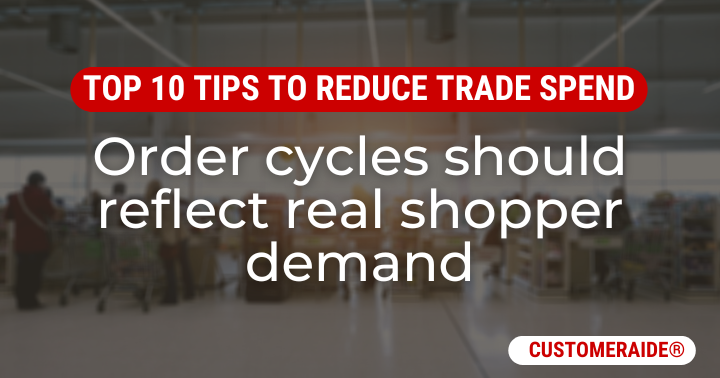
Frequently order cycle timings exist simply because it’s the end of an order period (i.e. month, cycle, quarter or year end).
Changing this behaviour to focus on sell out activity throughout the month, cycle, quarter or year helps to reduce the amount trade spend we invest in and increases our net revenue.
If we rely on month, cycle, quarter, or year-end order cycles to achieve our overall customer volume targets – this means that order cycles are not necessarily aligned with shopper demand. The result of this is that our customer will often request additional investment to move the stock at month-ends, when days’ supply increase and our customer is less than happy with more of his/ her money tied up in our stock.
We reduce and optimise our trade spend by making sure that our customer order cycles reflect real shopper demand.
So, we are accepting orders and making investments at those moments that we are likely to see the best results. To sense check whether we are focusing on sell out activity we ask ourselves the following questions:
- What is the trade spend ( as a % of Net Revenue ) in the last week of the month, cycle, quarter or year-end?
- Are we stock loading at month, cycle, quarter or year end? If so, why?
- How will we address any short term volume shortfall if we stop our current habit of month, cycle, quarter or year-end stock loading?
At the same time as re-phasing our order cycles we should be incentivising our customers and paying on sell out and not buy in.
When we align our order cycles with real shopper demand in our category, both we, and our customer focus on sell out activity ( both promotional and non-promoted sales ) throughout the order period and the investment we make is targeted at times when shopper sales are likely to be stronger, with more meaningful category growth impact.
It’s a win-win. Not only do you reduce trade spend because you are not chasing month, cycle, quarter or year-end targets; but you also spend more effectively on sales volumes which are driven by shopper demand.
Next in our ‘Top 10 Tips to Reduce Trade Spend’ series we’ll be looking in more detail at how we reduce and optimise our trade spend if we can negotiate to pay based on what our customers sell out, not what they buy in. If you have any questions or comments please get in touch.